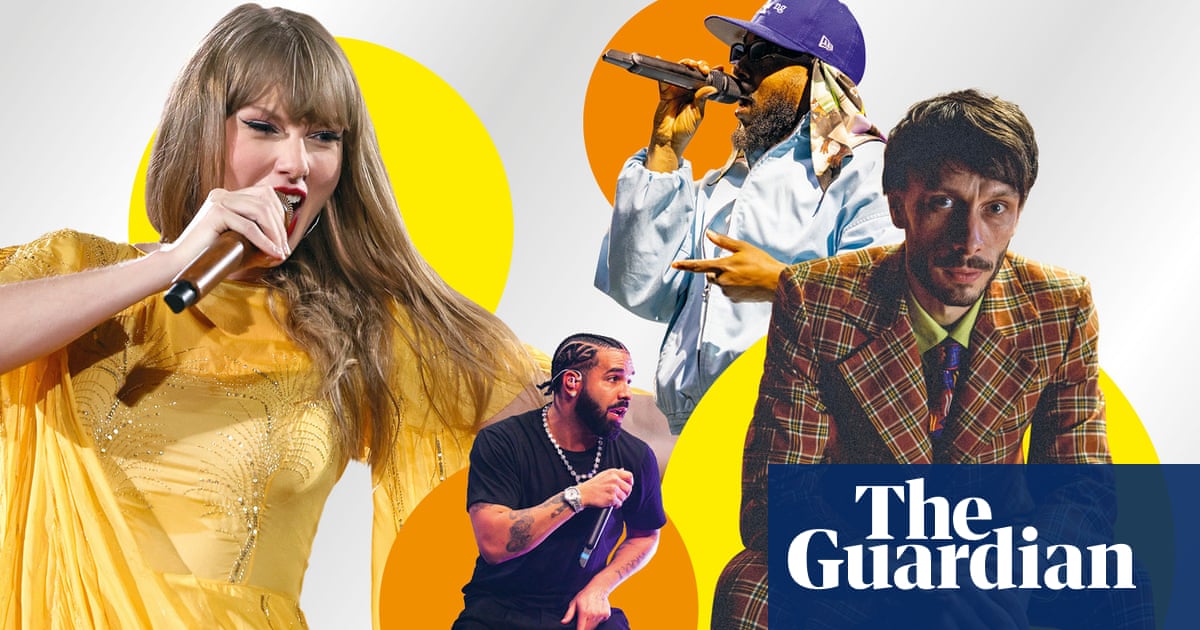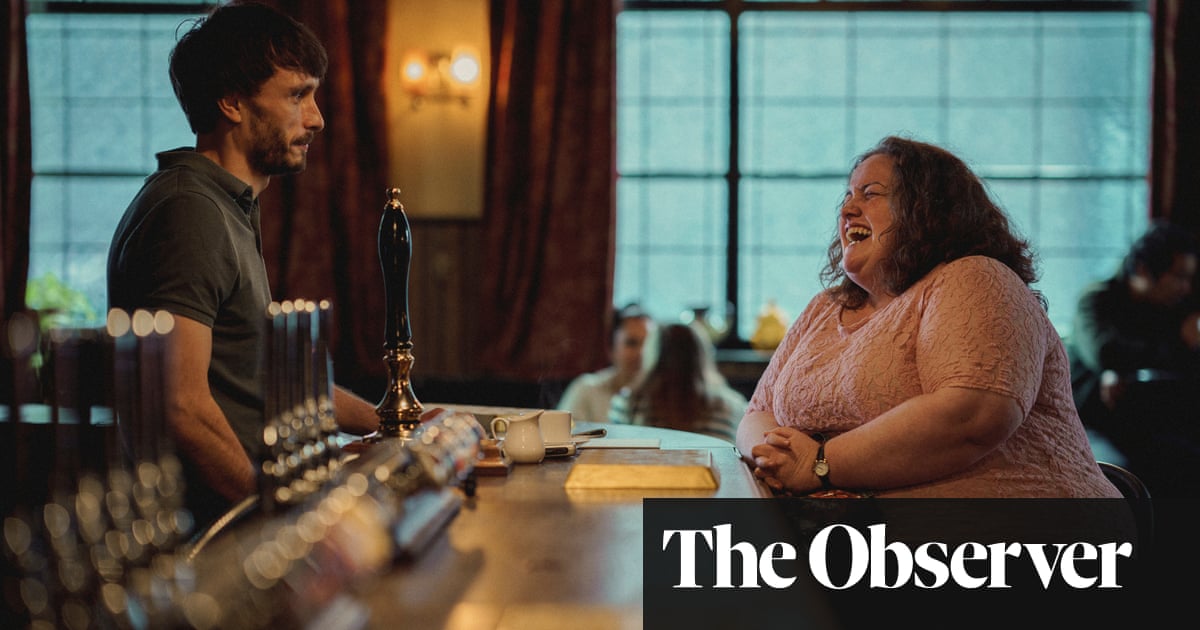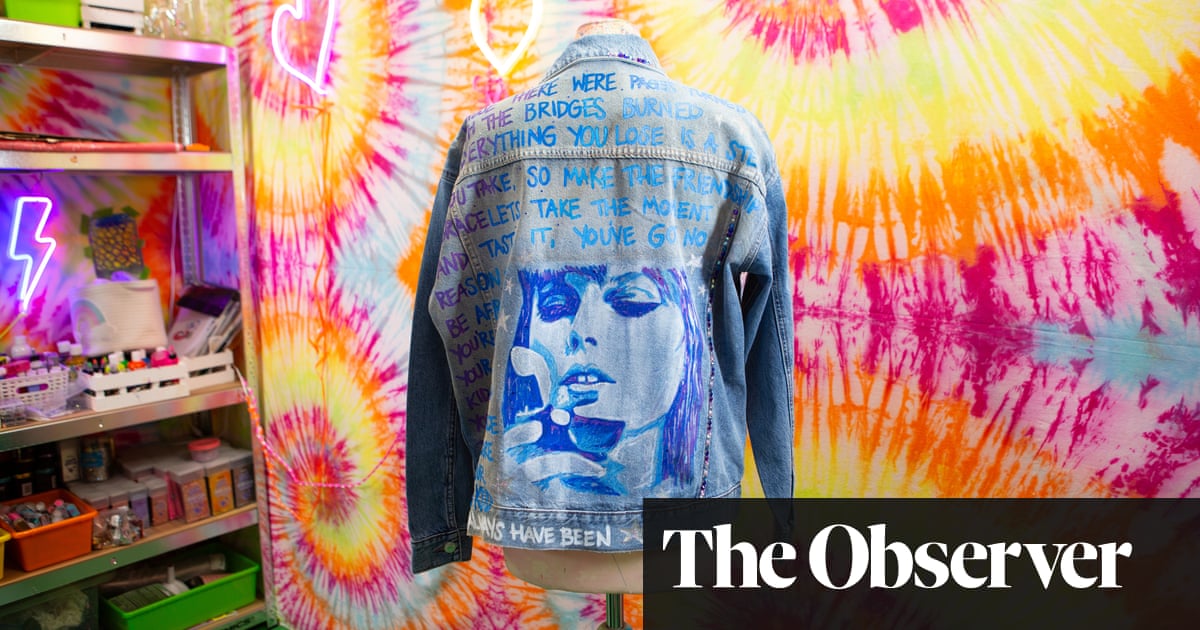
Irecently read a novel, Soldier Sailor by Claire Kilroy, that, from the start, I understood to be a work of fiction. Instantly, I was hooked by this immersive, gut-wrenching tale of a woman overwhelmed by the gruelling labour and absolute love that characterises early motherhood. Yet by the halfway mark, I was seriously itching for my phone. Not because I wanted a distraction, but because I desperately needed to know one thing: was it true?
Late April, 2024: three things dominate the pop culture conversation. Netflix series Baby Reindeer is the “true story” – as per the title card – of comedian Richard Gadd’s experiences of being stalked by an older woman and sexually assaulted by an industry mentor. A bracingly self-lacerating attempt to relay the knotty psychological toll of that abuse, it quickly racked up tens of millions of views. But for some it wasn’t quite revealing enough. Soon, online sleuths were searching for the real real story: apparently uncovering the actual identity of Gadd’s stalker, as well as that of the man who sexually assaulted him – a development that attracted huge controversy, wall-to-wall press coverage and even discussion in parliament.
Around the same time, Taylor Swift’s 11th album, The Tortured Poets Department, was decimating streaming records and saturating the headlines. The internet lit up with discourse, barely any of which related to the quality of the music itself. Instead, it was concerned with the lyrics that referred to specific relationships and actual events in Swift’s life. The musician’s output has long doubled as a cryptic, confessional autobiography, songs dotted with clues about the intimate details of her life. Unlike Gadd – who naively warned viewers not to investigate further – Swift’s easter egg-littered songs actively invited listeners to scour the album for insight into her romances with actor Joe Alwyn and the 1975’s Matty Healy, serving up material about her longrunning feud with Kim Kardashian along the way.
Finally, we witnessed two rap giants – the Pulitzer-winning Kendrick Lamar and Drake, by many metrics the most successful male solo artist of his generation – feuding via a volley of diss tracks that weaponised scandalous industry gossip, embarrassing personal revelations and insiderish references. Again, fans scrambled to decode and catalogue all this information online, providing elucidatory footnotes for those keen to get a handle on the grisly accusations and trace the animosity to its source.
Baby Reindeer, The Tortured Poets Department and the Drake v Kendrick exchange are all examples of art that centres on intimately personal, literally true information – and their value is almost entirely bound up in their proximity to reality. That’s not to say they have no artistic merit (in fact, Baby Reindeer is a masterpiece), but it is impossible to deny that they have acted primarily as starting blocks, preparing the public to race towards their actual entertainment: going online and finding out more.
In this new age of ultra-realism, art and truth are becoming increasingly intertwined, with audiences primed to expect reality lurking just below the surface of the culture they’re consuming. The zeitgeist teems with true stories, from starry dramatisations of historical crimes and recent news events to pop stars who queue up to bare their inner torment in no-holds-barred documentaries. The literary world, meanwhile, remains in thrall to tell-all memoir and autofiction. How did pop culture find itself in this moment of truth?
It is almost eerily fitting that Baby Reindeer was the show to fire up a debate about the ethics of parlaying real-life experience into comedy; Gadd was at the vanguard of standup comedy’s shift from meticulously engineered gags to bracing personal disclosure. He was not the first to embrace it: in 2012, the American comic Tig Notaro broke through with aset delivered days after receiving a cancer diagnosis, a new reality she frankly reckoned with on stage in lieu of pre-written jokes.
Yet it was Gadd’s 2016 Edinburgh comedy award for Monkey See Monkey Do – an emotionally raw show about his aforementioned sexual assault – that marked a real turning point. The following year, the co-winners of the Edinburgh prize were Hannah Gadsby – whose show Nanette detailed the homophobic violence she had been subject to as part of a wider condemnation of comedy’s tendency to obscure trauma – and John Robins, whose The Darkness of Robins chronicled the demise of his relationship with fellow comedian Sara Pascoe (who also performed her own show on the subject at the festival that year) with eviscerating honesty.
Standup now defaults to jokes mined from specific real-life trauma: speaking about a serious illness is common (see: Rhod Gilbert, Miles Jupp, Matt Forde, Richard Herring), while tales of nervous breakdowns (James Acaster’s Cold Lasagne Hate Myself 1999) and grief (Ed Byrne’s recent Tragedy Plus Time) are par for the course. Similar personal testimony also appears, thinly veiled, in TV dramedies (before Baby Reindeer there was Feel Good, One Mississippi, Somebody Somewhere, Shrill and This Way Up) – and, more recently, sitcoms (Big Boys, Such Brave Girls).
Trading on terrible experiences is now part and parcel of pop stardom, too. Over the past decade, there has been a general shift from manufactured artifice to a diaristic first-person mode that draws on personal pain – super-producer Jack Antonoff, who works with Swift, Lorde, St Vincent and Lana Del Rey, likes to begin songwriting sessions with the prompt: “What’s the worst thing that’s ever happened to you?” Just look at the trajectory of Kesha, who broke through in the early 2010s as a party-animal pop star trading on a sense of rebellious fun. Last year, she released Gag Order: its cover pictures her with a plastic bag over her head and its lyrics grapple with the trauma of her experiences in the music industry (in 2014 she attempted to sue her former producer Dr Luke for sexual assault, which he denied before countersuing. The two reached a resolution out of court last year).
Once worshipped from afar, in the social media age, we now see celebrities grasp for relatability – and there are few more efficient and powerful equalisers than personal strife. In fact, celebrity as a concept increasingly relies on this kind of disclosure: rather than tabloid hounding, the sphere is instead fuelled by frank admissions of struggle on podcasts and trauma-laced memoirs.
Trauma rises to the surface of popular culture hand-in-hand with literal truth, barely filtered and delivered in the first person – fictions in this realm tend to ring hollow and crass (see heiress Nicola Peltz Beckham’s recent film Lola, a tale of tragedy, abuse and deprivation that was deemed “poverty porn” by this newspaper). It makes sense: if people are looking for solidarity and connection then works of pure imagination feel irrelevant at best, deliberately false at worst. Even exaggeration doesn’t go down well: last year a New Yorker journalist “exposed” US comic Hasan Minhaj for embellishing stories in his routines about his experiences of racism.
It is not just reporters doing this: sleuthing for the truth behind a standup set or a pop song or a film is now a mainstream activity. It’s also the way modern music fandom works: solve the puzzles breadcrumbed by the cleverest pop stars – Swift, Olivia Rodrigo, Ariana Grande, Lana Del Rey and Beyoncé all litter their output with personal revelations – and your prize will be next-level understanding of their psyches. It goes without saying that fostering parasocial relationships requires artists to deal in literal truth. In the case of celebrities with podcasts or particularly active social media accounts, this often extends to the sharing of the kind of day-to-day minutiae you wouldn’t even bother relaying to your closest friends – and whose appeal is exclusively dependent on its veracity.
Ensuring that literal truth remains at the centre of your art comes with a huge bonus: free publicity. A major problem for pop culture this century has been its bounteousness: without the gate-keeping limitations of physical formats and restricted airtime, consumers have been faced with an onslaught of content, most of which is destined to languish in obscurity. Truth, however – which hitches on to the news cycle with relative ease and remarkably quickly – can be a shortcut to cut-through.
Anyone left baffled by the cultural cottage industry that sprung up around 2022’s so-called Wagatha Christie trial – the legal dispute between footballers’ wives Coleen Rooney and Rebekah Vardy – was able within a matter of months to watch a Channel 4 dramatisation, a West End play and two documentaries about it. This kind of docudrama – see also Channel 4’s recent Partygate and 2019’s Brexit: The Uncivil War – is utterly superfluous: we know the story, we just saw it unfold in real time. The familiar factual basis means these shows feel cynical and pointless, but it also means headlines. Mind-numbing repetition is not a problem, it’s another angle: Scoop, the recent Netflix film about Newsnight’s 2019 Prince Andrew interview, will soon be joined by a similarly star-studded TV series about the event – both have attracted healthy press coverage.
In the best case scenario, this ultra-realist content starts generating further promo autonomously. Earlier this year ITV’s Mr Bates vs the Post Office – a dramatisation of the Horizon IT scandal – racked up more than 10m views after creating a feedback cycle of chatter: viewers wanted more information on the story, which led to more press coverage which led to more streams and, eventually, real-world impact, with former Post Office CEO Paula Vennells stripped of her CBE and the prime minister promising compensation to victims. The series was celebrated for drawing attention to a shocking miscarriage of justice – but its worth hinged almost entirely on the fact it was true.
Due to narrative limitations, these stories will always be incomplete and misleading to some degree. But people can always Google it, can’t they? Viewers, especially those who came of age during the true-crime boom, need little encouragement to search for supplementary information about a story – in most cases, their phones are already in their hands (one study last year found 95% of global respondents aged 16-21 used another device while watching TV). At least this way they aren’t moving on to something else entirely.
Ultra-realism – a factual core rendered in the language of fiction – has conditioned us to hunt for truth, sometimes with strange results. Alex Garland’s latest film Civil War imagines a conflict-riven US through the lens of a battle-hardened photojournalist, but the film is deliberately vague about the details of the warring factions and its director has refused to make real-world analogies. This didn’t go down particularly well in some quarters: an article in the Hollywood Reporter titled The Compellingly Packaged Cowardice of Civil War complained about the film’s refusal to “explicitly address this moment”. Released in April, Challengers tells the totally made-up story of a longrunning love triangle between three tennis players. But when people on social media saw parallels with Past Lives – an autobiographical film by Celine Song, the wife of Challengers’ writer Justin Kuritzkes – it prompted Kuritzkes to explicitly deny that the film was an insight into his own personal life.
Is our appetite for literal truth healthy? In one sense, it seems to intensify all the best bits of art: we automatically search for authenticity, meaning, verisimilitude, connection – so why not replace fiction that rings true with fiction that actually is true? Meanwhile, airing real-life trauma undoubtedly tackles the shame and secrecy that surrounds so much abuse and pain; if we have had similar experiences, it assures us that we are not alone.
Yet ultra-realistic culture feels empty, grubby and cynical, too – this lucrative regurgitation of reality brings out the rubberneck in us all. And although we might feel for its creators, it also stratifies human experience. Ultimately, our lives simply amount to individual stories just waiting to be told and sold.
Back to that novel. While I didn’t believe this was a wholly factual account of actual occurrences, I was finding it impossible to read this experience of motherhood – delivered in a first-person stream-of-consciousness-style – as anything other than the author’s very own. I identified with so many of the thoughts and feelings on the page that for this to be merely a work of conjecture would have felt like some kind of cruel trick. But I also felt fully entitled to know if it was true – that’s what ultra-realism has conditioned us to expect.
There were no Baby Reindeer-type Subreddits for me to browse – but my own basic internet sleuthing quickly convinced me that the novel was, at its core, a true story. I felt satisfied for a moment. Then I started to realise what had been lost.












